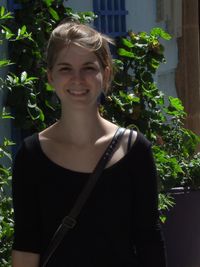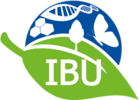Contact
Prof. Dr. Thorsten Dittmar
Institute of Chemistry and Biology of the Marine Environment (ICBM) Phone (OL) +49 (0)441 798 3602 eMail thorsten.dittmar@uol.de
B3
B3 Molecular biodiversity of the “non-living environment”

Ms Andrea Mentges
IBR PhD Candidate
| Contact details: | Research Group for Marine Geochemistry Carl-von-Ossietzky-Str. 9-11, 26129 Oldenburg, Germany |
|---|---|
| Room: | W3-0-C8 |
| Telephone: | +49 (0)441 7983704 |
| Email: | andrea.mentges@uol.de |
Supervisors:
PI: Thorsten Dittmar, Co-PIs: Bernd Blasius, Helmut Hillebrand
Projects and Research:
Background
Marine microorganisms are surrounded in their aqueous environment by large quantities of dissolved organic matter (DOM). Bacteria can only assimilate dissolved molecules, and DOM is therefore the main mediator for the flux of matter and energy in the ocean. As a consequence of the conservation of a minor DOM fraction, the marine organisms that produce, transform and decompose organic matter are surrounded by an enormous excess of residual DOM. This fraction of DOM has accumulated to one of the largest organic carbon pools on Earth. DOM is composed of a myriad of different molecules. Our research has shown that the molecular diversity of DOM exceeds the genetic diversity of living organisms by far. Environmental diversity and biodiversity are closely interrelated and should be understood in the context and as a continuum. To date there are no integrative studies that seek to understand this continuum of diversity between the living and non-living world. This project will test the novel diversity continuum concept in biogeochemistry.
Outline for a PhD thesis
This PhD thesis will be entirely data based, with a focus on mathematical modeling. Over the past years we have collected a large molecular data set, containing information of up to 10,000 molecular formulae of ~1000 DOM samples across major oceanic basins. For many of these samples, complementary information on microbial diversity is also available. The following themes should be the core of the PhD thesis; details will be elaborated together with the PhD student. The successful candidate must have a strong background in environmental mathematical modeling. Background knowledge in biodiversity and marine biogeochemistry is advantages.
(1) Method development
Application of biodiversity concepts to assess DOM molecular diversity. A main challenge will be the fact that DOM can only be molecularly characterized on a molecular formula level. The true molecular diversity, however, is on the level of structural isomers. Similarly, biodiversity would not be sufficiently be described, e.g., on a genus level. Together with the group of Bernd Blasius, we already have developed a numerical concept on how to address this problem.
(2) Application in the context of microbial diversity and function
The novel molecular diversity approaches (task 1) will be applied to our existing data sets, with a focus on large oceanographic transects.
(3) Implication into a global oceanographic circulation model (GCM)
This will be done in collaboration with Prof. Curtis Deutsch (University of Washington, Seattle, USA). The goal is to integrate the novel concept into a GCM. This GCM will be tuned to fit published global profiles of dissolved organic carbon (DOC) concentrations. The model will have predictive power and assess the global pool of DOC and its distribution pattern as a function of microbial and DOM molecular diversity. An extended stay of approx. 6 months in Seattle is planned for this part of the PhD thesis.
Publications:
Previous publications of the candidate:
Peppler-Lisbach, C., Beyer, L., Menke, N., & Mentges, A. (2015). Disentangling the drivers of understorey species richness in eutrophic forest patches. Journal of Vegetation Science, 26(3), 464–479. doi.org/10.1111/jvs.12249

